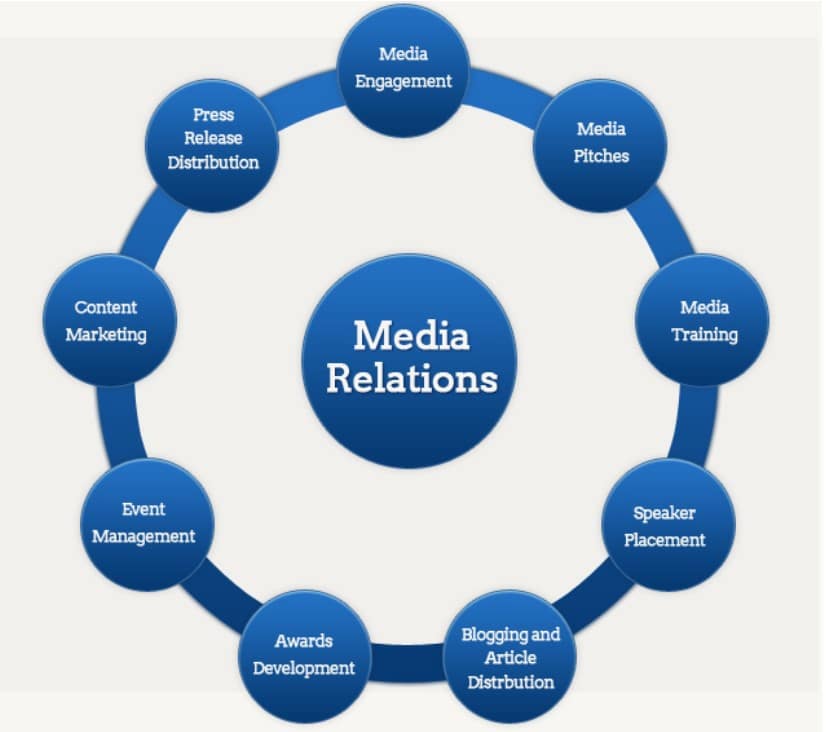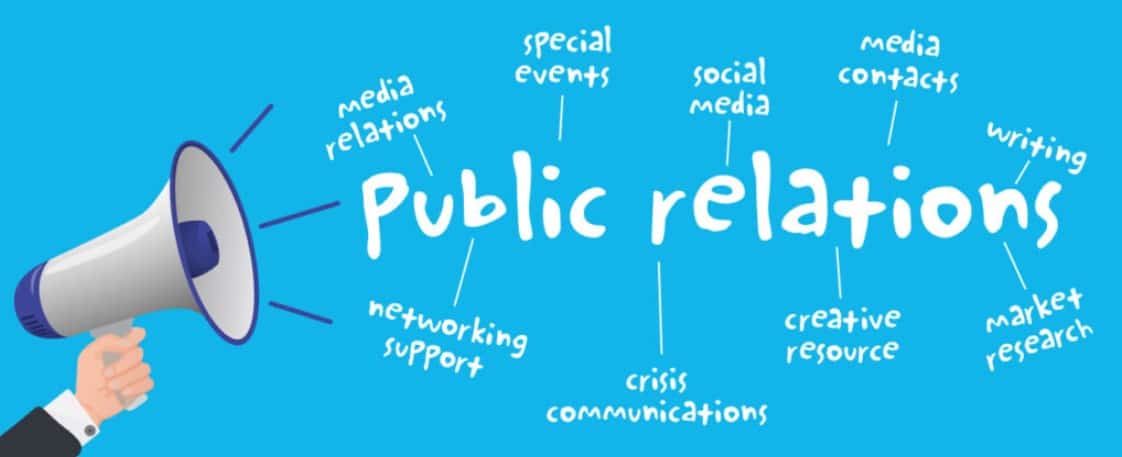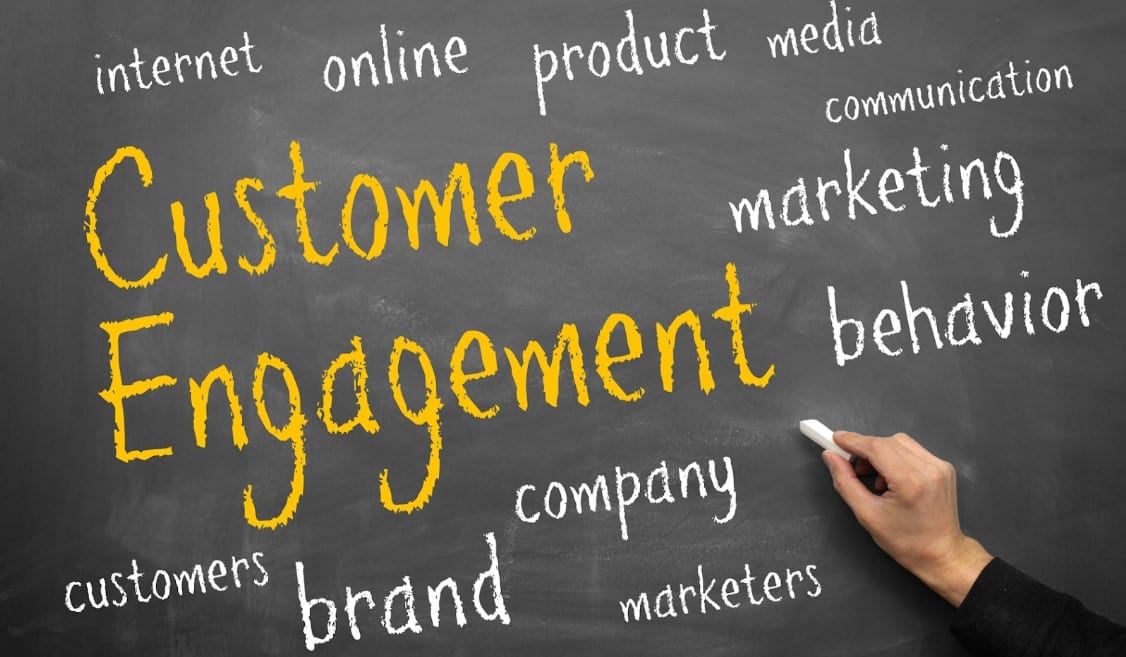Media relationship management plays a crucial role in the success of any business or organization that seeks to maintain a positive image and reputation. Essentially, it involves establishing strong and meaningful connections with members of the media through effective communication, collaboration, and trust.
Strategies for effective media relationship management are therefore essential tools that can help organizations to build better relationships with the media and leverage the potential of these relationships to achieve their goals. In this article, we will explore some of the strategies businesses can implement to effectively manage their media relationships and ensure positive coverage.
What is media relationship management?
Media relationship management is the process of building and maintaining positive relationships with media outlets and journalists. It involves strategically communicating and interacting with the press to enhance coverage of a brand, promote positive public relations, and garner goodwill. Effective media relationship management involves a proactive approach, with brands reaching out to media outlets and journalists regularly, and responding promptly to requests for information or interviews.

Image credit: https://smcom.be
It also involves ongoing cultivation of relationships with key reporters and influencers, with a focus on mutual benefit and providing value. The ultimate goal of media relationship management is to establish trust, credibility, and positive rapport with the media, which can result in increased media coverage, improved brand reputation, and stronger relationships with stakeholders.
Importance of effective media relationship management
Media relationship management is crucial for any organization that aims to maintain a good reputation, attract customers, and build strong relationships with stakeholders and the public. This approach involves building and maintaining positive relationships with the media, including journalists, bloggers, and influencers. By doing so, organizations can enhance their visibility and credibility, and receive positive media coverage that can contribute to their growth and success. Effective media relationship management is especially important in today’s digital age, where traditional media has been largely replaced by social media and online platforms that can reach millions of people in a matter of seconds.
Organizations that invest in effective media relationship management can benefit in several ways. First, they can establish themselves as a trusted and reliable source of information, which can help them build a loyal customer base and strong brand recognition.
Strong media relationships also enable organizations to respond quickly and effectively to negative or crisis situations, reducing the risk of reputational harm. Additionally, effective media relationship management can lead to greater exposure and visibility, which can help organizations reach new audiences and markets.
However, effective media management is not without its challenges. One of the main challenges is maintaining transparency and credibility, particularly in an era of “fake news” and misinformation. Organizations must be transparent and truthful in their communications with the media, and ensure that they only share accurate and reliable information. Furthermore, media relationships can be time-consuming and require significant resources (for example, the right project management approach and implementation), particularly for organizations with limited budgets or small teams.
Nevertheless, the benefits of effective media relationship management make it a worthwhile investment for any organization that wants to enhance its reputation and build lasting relationships with key stakeholders.
Challenges of media relationship management
One of the biggest challenges in media relationship management is managing multiple media channels at once. With companies wanting to grow their social media, companies now have to maintain relationships with traditional journalists as well as bloggers, vloggers, and other influencers on various social media platforms. This can be a daunting task, especially for smaller companies with limited resources. Additionally, the 24-hour news cycle and the prevalence of fake news make it easier than ever for a company’s message to be misinterpreted or misrepresented. Another major challenge is maintaining transparency and building authentic media relationships.
The media and the public have become increasingly skeptical and are quick to call out any perceived lack of transparency or honesty. Companies must be careful to only make promises they can keep and to be upfront about any shortcomings. Finally, media relationship management can be time-consuming and expensive. Companies must be strategic in their efforts, targeting the most relevant media outlets and influencers and prioritizing relationships with those who can provide the most value to the company.
By understanding these challenges and working to overcome them, companies can improve their media relationship management and see a positive impact on their overall business goals.
Strategies for effective media relationship management
-
Develop a media relations plan
Developing a media relations plan is a vital part of establishing a successful media relationship strategy. This plan should outline key objectives, target audience, messaging, and tactics that will be used to engage with media outlets and journalists. One of the first steps in developing a media relations plan entails identifying the most appropriate channels and outlets to connect with the target audience. This requires a deep understanding of the media landscape, including the types of stories that resonate with the target audience and the best time to reach out to journalists.
The next step in developing a media relations plan is to create a messaging platform that is consistent across all channels. This includes key messages and talking points that will be used in media outreach, as well as the development of a comprehensive media kit that includes press releases, backgrounders, and other relevant materials. It is also essential to develop relationships with influential journalists in the target market, as they are the gatekeepers to the audience that companies seek to reach.
A media relations plan should also take into account the various stages of a product or service launch, from pre-launch to post-launch. For example, pre-launch activities might include creating buzz around the product, conducting product demonstrations, and providing journalists with exclusive access to the product and showcasing the design system services offered by the company. During the launch phase, the focus should be on generating media coverage around the product or service and securing positive reviews. Once the launch has occurred, it is important to continue to engage with journalists through follow-up interviews, product updates, and other relevant information.
In order to be effective, a media relations plan must also account for crises that may arise, such as negative media coverage or a product recall. This requires a crisis communications plan that outlines how the company will respond to negative media attention and the steps that will be taken to address any issues that may arise.
It is important to measure the effectiveness of a media relations plan by tracking media coverage and engagement with journalists. This can be done through various metrics, such as reach, engagement, and sentiment analysis. By continually evaluating the success of the media relations plan and making adjustments as necessary, companies can build stronger relationships with journalists and achieve greater success in reaching their target audience.
-
Build and maintain relationships with journalists
Building and maintaining relationships with journalists is a crucial aspect of any media relations plan. Good relationships with journalists can lead to positive media coverage, increased exposure, and improved brand reputation. To effectively build these relationships, it’s important to first identify the journalists and media outlets that are most relevant to your brand. This can be achieved by researching publications, journalists, and related topics in your industry, as well as analyzing their writing style, tone, and general coverage. By doing so, you can gain a better understanding of how to approach and communicate with them.
When doing business networking with journalists, it’s important to personalize your pitch. Generic pitches are often overlooked, so taking the time to craft a tailored message that highlights why your brand and story are relevant to their beat and audience is essential. Additionally, building relationships with journalists is an ongoing process; it’s important to engage with them beyond just pitching stories. By reading and engaging with their content, sharing their articles, and offering insights on industry news or trends, you can establish yourself as a valuable resource and build a lasting relationship.
It’s also important to consider the journalist’s preferred communication method. Some prefer email, while others may prefer phone calls or even social media. Understanding their preferences can help you effectively communicate with them and increase your chances of success. Additionally, it’s important to be respectful of their time and deadlines. A journalist who feels respected and valued is more likely to prioritize your story and provide positive coverage.
A media monitoring service can help you identify which journalists and media outlets are most receptive to your pitches and messaging. This information can be used to further hone your media relations strategy and ensure that you are building and maintaining relationships with the right journalists and media outlets.
-
Create compelling content
The backbone of an organization’s media strategy is its content strategy. The content produced by a brand can be used to establish authority in an industry, engage consumers, and demonstrate the brand’s unique value to consumers. Content marketing is a critical component of public relations, and it encompasses the creation and distribution of valuable, relevant, and consistent material that is intended to educate, inspire, or entertain a targeted audience. It is essential to think critically about the content that is being created and distributed to ensure it meets the needs and interests of the target audience.

Image credit: https://www.criminallyprolific.com
A strong content strategy is critical when it comes to media relationship management because it establishes a connection between the brand and its target audience. Content should be visually stimulating, engaging, and able to convey important information effectively.
It is important to create content that is tailored to the specific audience. This can be achieved by researching the target audience first before content creation begins. Knowing the target audience’s interests, behaviors, and values can help to tailor content to their specific needs. Additionally, it is important to vary the types of content that are being created to reach a broader audience. Multimedia content such as videos and infographics can be very effective in getting a brand’s message across. It is also essential to keep the content up-to-date to maintain the audience’s attention.
Social media platforms are an essential tool for content distribution. Brands can use these platforms to create a community around their content. This can be accomplished by encouraging customer engagement through social sharing, comments, and likes.

Image credit: https://blog.dmtraining.net
Social media also creates opportunities for brands to have real-time interactions with their audience. Monitoring social media platforms can help organizations understand the interests and needs of their audience better. This understanding can be used to inform the creation of future content that is more relevant to the audience.
Creating compelling content is a critical element of any media strategy. A well-thought-out content marketing plan can help businesses establish authority in their industry, build a connection with their audience, and provide a platform for interaction between the brand and its audience. The content must be tailored to the specific audience to be effective and must be varied in type to maintain audience engagement. Social media platforms are a valuable tool in content distribution and can be used to create a community around a brand’s content. Reflecting on the audience’s feedback can help to improve future content creation.
-
Leverage social media
Social media is a powerful tool for building and maintaining relationships with journalists, as well as amplifying the reach of your content. One effective strategy is to follow journalists on social media and engage with their content. This can include sharing their articles, commenting on their posts, and thanking them for their coverage. It is also important to regularly share your own content on social media, and to tailor it to the specific platform and audience. For example, Twitter is ideal for short and timely updates, while LinkedIn is better suited for longer, more professional content.
Another key strategy is to use hashtags to increase the visibility of your content and to join relevant conversations. This can help to position you as a thought leader in your industry and to attract the attention of journalists who cover your beat. Social media can also be used to identify and connect with journalists who are interested in your topic or industry. Tools such as Twitter lists, LinkedIn groups, and Facebook communities can help you to find and engage with journalists who are relevant to your brand. Finally, it is important to monitor and measure the impact of your social media efforts, and to adjust your strategy as needed. This can include tracking engagement metrics such as likes, shares, and comments, as well as monitoring your brand mentions and sentiment.
-
Monitor and measure results
The process of Monitoring and Measuring Results is a crucial aspect of effectively managing media relationships. Monitoring provides insight into the success of media campaigns and allows for adjustments to be made in real-time. To begin, it is essential to establish clear metrics that align with the overall goals of the media relation plan. These metrics should be specific, measurable, attainable, relevant, and timely. Implementing a tracking mechanism such as media monitoring software can assist in aggregating information from various sources. Social media interactions, website traffic, and media coverage should all be tracked and analyzed to determine the success of campaigns.
Conducting media audits can help to identify gaps in media coverage, demographic discrepancies, and opportunities for improvement. A media audit should involve an analysis of the target audience, the media landscape, and the messaging conveyed. This allows for optimization of the message to resonate with the desired audience. Additionally, it is essential to compare media coverage against competitor coverage as this can inform future campaigns and help to identify key journalists and publications to engage.
Reporting on the results of media campaigns is also crucial in determining the effectiveness of media relationship strategies. Presentation of results should be clear, concise, and informative and it should reflect the true aim of the presentation.
Great and effective presentations carry all those things It should include a summary of the key metrics, analysis of the data, and recommendations for future campaigns. Developing a standardized reporting template can simplify the reporting process and ensure that key metrics are consistently captured.
Furthermore, it is essential to leverage data to continuously improve media strategies. Regular review of analytics can assist in making informed decisions about campaign adjustments. Analyzing the success of various messaging strategies, pitches, and interactions can help to optimize future engagement with media. Utilizing A/B testing can help to identify the most effective strategies for engaging media, and adapting to changes in the media landscape such as emerging trends and evolving coverage can help to ensure continued success.
Developing a media relations plan
-
Identify target media outlets and journalists
In order to establish a successful media relationship management strategy, it is imperative to identify the target media outlets and journalists that align with your organization’s goals and objectives. This can be achieved through thorough research, utilizing media databases, and monitoring relevant industry news. It is crucial to research the specific topics and beats that each journalist covers, as well as their past publications and social media activity, in order to tailor and personalize communication with them.
Such personalization is key in everything you do. Whether it’s email personalization, social media, or even in-person meetings, implementing strategies that demonstrate an understanding for your audience will be the best way to build relationships with the media.
Furthermore, it is important to prioritize top-tier media outlets and key journalists who have the most influence and reach within your target audience. Once you have identified your target media outlets and journalists, it is important to maintain accurate and up-to-date contact information and regularly engage with them through various channels, such as email, social media, and in-person meetings. Building strong relationships with journalists can lead to increased media coverage and positive brand recognition.
-
Set goals and objectives
Setting clear goals and objectives is crucial to the success of media relationship management. Before reaching out to any media outlet or journalist, it is essential to identify what you want to achieve from the interaction. This includes deciding on the message that you want to convey and the outcomes that you hope to achieve from pitching your story. Having clearly defined goals and objectives will enable you to measure the effectiveness of the pitches and refining them accordingly. It is important to set measurable goals that are specific, attainable, relevant, and timely.
For instance, you may set a goal to get a certain number of interviews with journalists, increase media exposure, or generate more website traffic. It is also important to understand the media outlets and journalists you are targeting and determine the best approach for communicating with them. Understanding their audience and interests will guide you in crafting messages that would resonate with them. Another crucial aspect to consider is the timeframe for achieving the set goals and objectives.
This will determine the frequency of follow-ups, time for pitching, and the number of interactions required to meet the objective. Setting goals and objectives is the foundation for effective media relationship management as it enables you to be clear about your vision, communicate with confidence, and tailor your approach for maximum impact.
-
Craft key messages
Crafting key messages is a crucial part of effective media relationship management. It involves identifying the most important points that the brand wants to convey and developing messages that speak to the target audience. It is important to tailor these messages to each specific media outlet and journalist in order to effectively communicate with them. A good place to start when crafting key messages is to identify the brand’s unique selling points and what sets it apart from the competition.
From there, messages can be developed that highlight these unique qualities. It is also important to consider the target audience and what messages will resonate most with them. Once key messages have been identified, they should be tested and refined through feedback from journalists, customers and other stakeholders. It is also important to continually evaluate and update these messages to ensure they remain relevant and effective.
Key messages should be consistent across all media channels, including social media, websites and press releases. With careful crafting and consideration, key messages can effectively communicate a brand’s value and garner positive attention from the media.
-
Create a media kit
Creating a media kit is an essential step in effectively managing relationships with members of the media. A media kit is a collection of materials that provides essential information about the company, which journalists can use when writing stories. The kit typically contains a company overview, key facts and figures, and contact information for the company spokesperson or media relations team. It can also include press releases, high-resolution images, and videos that journalists can use when creating their stories. The goal of a media kit is to provide reporters with the necessary information to write a meaningful story about the company quickly and easily.
When creating a media kit, it is important to make it easy to navigate and visually appealing. The media kit should be well-organized, with information provided in a clear and concise manner. Ensuring that the information provided is accurate and up-to-date is equally important. Journalists want to be able to access the information they need quickly, and a media kit that is difficult to navigate or has outdated information will frustrate them and discourage them from covering the company.
In addition to providing essential information about the company, the media kit should also reflect the company’s brand identity. Using high-quality images that reflect the company’s visual identity or including quotes from company executives can help convey the company’s overall message and values. A well-designed media kit can also demonstrate to journalists that the company takes its public image seriously and is committed to maintaining positive relationships with the media.
Overall, creating a media kit is an important step in developing a productive relationship with members of the media. An effective media kit should provide essential information in a clear and concise manner while reflecting the company’s brand identity. Ensuring that the media kit is well-designed and up-to-date can help build trust and credibility with members of the media, ultimately leading to increased coverage and a more positive public image for the company.
Media relationship management – FAQ
1. What are the benefits of effective media relationship management?
Effective media relationship management helps to establish trust and credibility with journalists, leading to increased positive media coverage. It also helps to ensure accurate reporting and can prevent negative publicity. It can lead to increased visibility and brand recognition.
2. How can I improve my media relationships?
To improve media relationships, it is important to establish open and honest communication with journalists built on respect and understanding. It is also important to be responsive, timely, and reliable. Providing exclusive news or access can also help build strong relationships.
3. What are some common mistakes to avoid in media relationship management?
Common mistakes in media relationship management include failing to provide accurate information, being unresponsive or unreliable, being unprepared for interviews, failing to establish trust and not focusing on the importance of building rapport. It is also important to avoid being too aggressive or manipulative with journalists.
4. How can I prepare for media interviews?
To prepare for media interviews, it is important to research the journalist and their outlet, prepare key messages and talking points, anticipate potential questions and practice responses, and prepare supporting materials such as statistics or visuals. It is also important to dress professionally and exude confidence and composure during the interview.
5. How can social media be used to enhance media relationship management?
Social media can be used to enhance media relationships by engaging with journalists on their social media platforms and sharing relevant content. It can also be used to monitor and respond to media coverage, and to share news or updates in real-time. Social media can also serve as a platform for building relationships with new journalists.
6. Why is it important to establish a crisis communication plan?
Establishing a crisis communication plan is crucial for effective media relationship management in the event of a crisis or negative publicity. A crisis communication plan outlines the steps and protocols for handling crises and communicating with stakeholders and the media. Having a plan in place can prevent further damage and help maintain trust and credibility with journalists.
Conclusion
Implementing effective media relationship management in an organization is essential for staying up-to-date on media coverage, and developing strong relationships with journalists.
The above strategies and tactics can help organizations establish and maintain strong media relationships, ensuring that they are well-prepared to strategically manage any potential crises.








